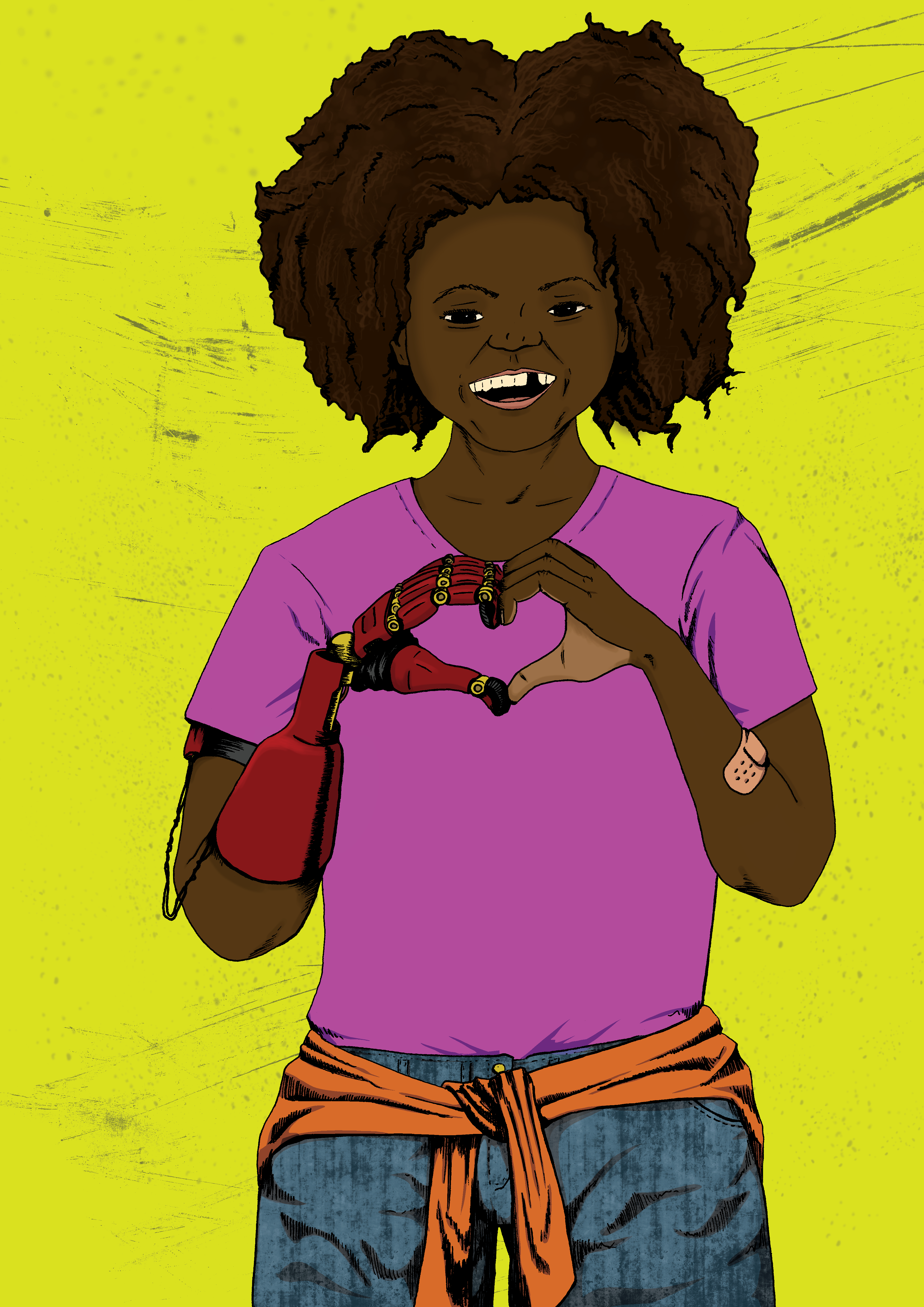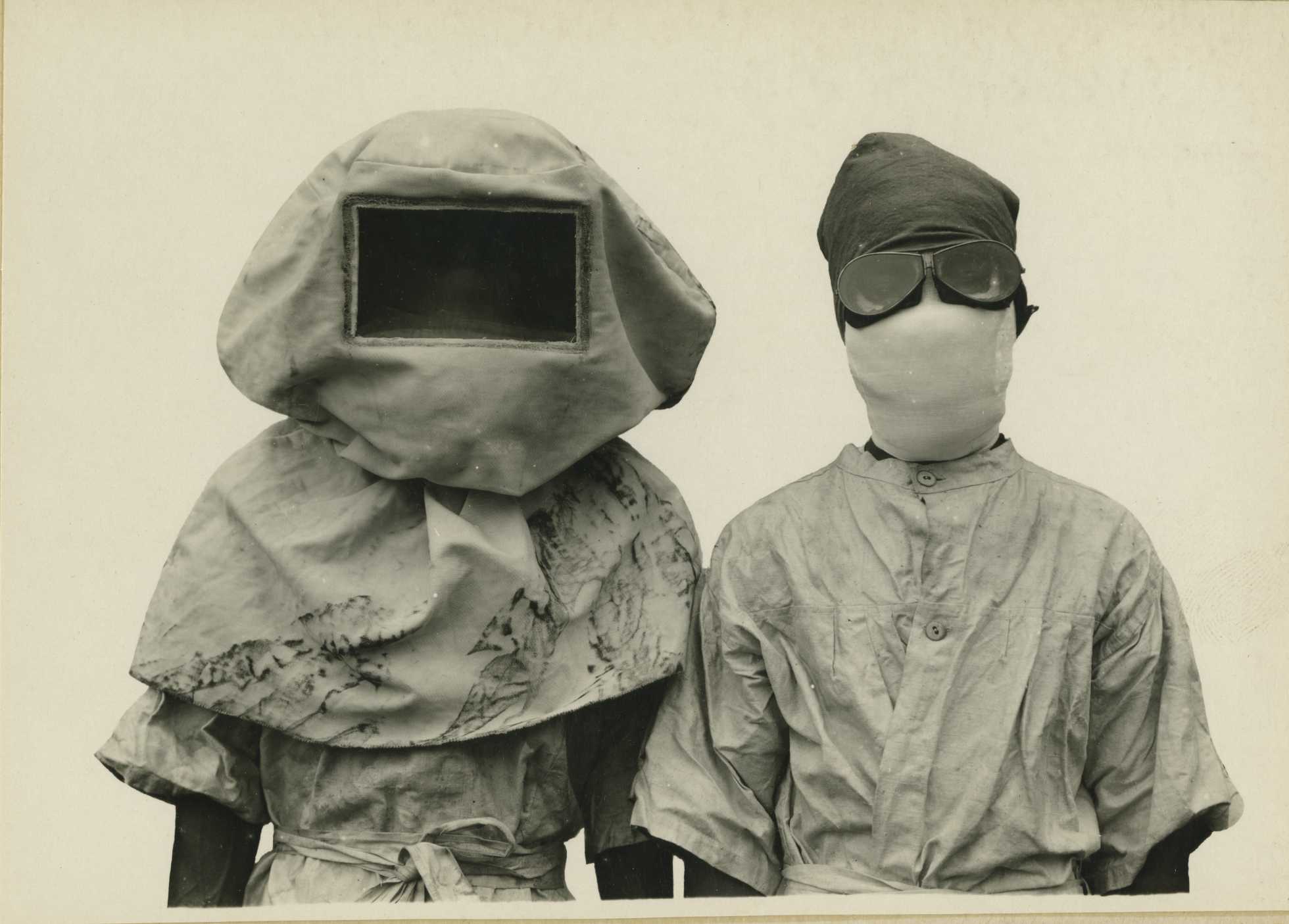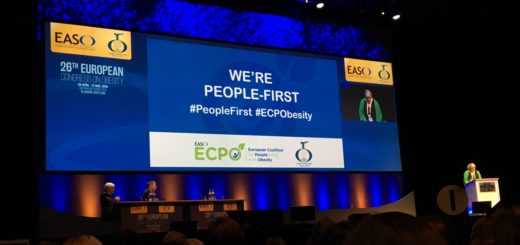Technology at our fingertips

Prostheses, artificial replacements of body parts, can transform the lives of those with limb differences – people with partial or complete limb loss. One such device is the bebionic hand, the most lifelike prosthetic hand the world has seen to date. It’s individual sensors and motors are carefully positioned on every finger, coupled with powerful microprocessors, and precisely synced with specialised software, permitting everything from fine dexterous tasks to heavy lifting1. But, due to their size and weight, bebionic hands remain unavailable to children below their teens, which is a drawback prevalent amongst advanced prostheses.
An exemption to this is the i-limb quantum™, developed by the Scottish company, Touch Bionics2. Marketed as the only upper limb prosthesis that can change grips with a simple gesture, the i-limb quantum displays similarly remarkable technological feats to the bebionic hand but, unlike its counterpart, is available in extra small sizes for children. The issue with both prostheses is that their cost lies in the staggering 5-figure range.
Enter 3D printing, a manufacturing method that is forging a path towards making prostheses accessible for all. This revolution is exemplified by Handprints e-NABLE Scotland3, a student society at the University of Glasgow making free 3D-printed prosthetics available for children.
When the Handprints team met their first recipient, then 4-year old Kara, they noticed she was rather timid, often holding her arm behind her back. Kara was born without fingers on her left hand due to amniotic band syndrome, a congenital disorder (a condition present at birth) in which strands from the amniotic sac entangle and entrap parts of the developing foetus. After several meetings and limb fittings with the team, Kara received her own personalised prosthesis, a functional My Little Pony-themed, purple coloured hand which she can now use for simple tasks, such as playing with her My Little Pony toys (check out this video to hear more about her story4). In a following meet-up, the team noted her beaming smile and heightened confidence, describing themselves as gobsmacked that ‘university students can change a child’s life’.
Handprints specialises in developing and manufacturing functional elbow or wrist-controlled prosthetics enabling users to grip and control objects. Run by biomedical engineering students, the society recently showcased their work at TEDxUniversityofGlasgow. Amongst the variety of prototypes on display, a child-sized hand stood out from the rest, with its small plastic palm and articulate fingers. A society member revealed their commitment to working with children with limb differences, supporting them up to adulthood. The society highlighted that, although funded prostheses are available to children through the NHS, the range offered is limited. This is not only due to the high cost of more advanced technologies but also since children naturally outgrow prostheses and demand is relatively low.
In Scotland, the National Specialist Prosthetics Service has approximately 450 new patients and 6,500 outpatient appointments per year. Of these cases, an estimated 15% arise from severe infections, trauma, cancer, or congenital disorders. These notably rare occurrences are also the primary factors underlying limb differences in children. Limb fitting stands in stark contrast to a one-size-fits-all approach since the type of limb difference, health and fitness levels, clinical needs, life-style, and personal requirements vary substantially. Limb fitting is also not a one-off occurrence as prosthetic limbs require regular reviews for necessary adjustments and repairs and need to be replaced and changed overtime to ensure suitability and comfort for the child. Only certain types of prostheses for a given amount of time are therefore suitable for a child, making funding (particularly more expensive prostheses) difficult.
While a prosthetic limb can help some people regain their independence and mobility, others choose not to wear a prosthesis, making demand for prostheses even lower than the number of patients cited above. Besides issues regarding functionality, comfort, and cosmesis (the preservation, restoration, or enhancement of physical appearance), each new prosthesis requires getting used to and building the strength and coordination to use it. For some children, adapting to a prosthesis can prove more challenging than living with a limb difference which they have grown up with and learned to manage with ease5.
For those whom a prosthesis is suitable and for those who choose to wear one, there are generally two options available: myoelectric or body-powered. Myoelectric prosthetics are powered externally via sensors attached to the skin. These sensors detect muscle-generated electrical signals which then send signals to external motors in the prosthesis to enable movement. Mechanical or ‘body-powered’ prosthetics are powered by one’s muscular strength. For example, upper limb prosthetics commonly consist of a harness and cable system. Though substantially cheaper, body-powered prosthetics offer less functional control and are visually less similar to a human limb. Yet a simple comparison such as this does not do justice to the complex and unique needs of individuals with limb differences. Since evidence favouring the use of myoelectric or body-powered prosthetics remains inconclusive, the NHS faces challenges in funding more advanced prostheses.
According to an NHS policy document from 2015 regarding multi-grip upper limb prosthetics6, ‘there was not sufficient evidence to support the routine commissioning of this treatment’ and ‘[they] are therefore not routinely funded’. The document referenced a systematic review looking at 40 studies from the past 25 years, which found that average rejection rates were 45% for body-powered and 35% for myoelectric prosthetics amongst children, with no change in rejection rates in the 25 years prior. The policy document cited an additional two comparative studies where children were randomised to a body-powered and then myoelectric hand prosthesis or vice versa. One found there was no difference in clinical outcomes of performance and the other observed that, although children preferentially chose the myoelectric prosthetic, rejection rates were substantially higher amongst users compared to body-powered prosthetics after two years. The review concluded that it was difficult to establish a clear verdict whether myoelectric or body-powered prosthesis are preferred due to variability in study methodologies, such as the variety in devices and types of populations included. This conclusion arguably reflects the diversity amongst individuals with limb differences and represents one of the biggest hurdles in developing prostheses.
Handprints in part addresses these issues through utilizing 3D printing. The team takes precise measurements of a recipient via 3D scanning (using either their own designs or those available on the open-source software e-NABLE7) and prints custom-made light-weight prostheses to fit children in terms of function and aesthetics. While computer-aided design of prostheses requires engineering skills and considerable time, 3D-printing plastic prosthetics can take less than half a day. Designs are saved and can be edited as required for the recipient. Once the design stage is complete, replacing broken parts is straightforward and inexpensive. A single prosthesis is estimated to cost the society a mere £15 to produce. Although 3D printers themselves don’t come cheap, through donations, crowdfunding, bake sales, pub quizzes, and grants (such as the recently won ‘Outstanding Contribution to a Society’ at the Milkround Society Awards 2018), the student society is able to fund the printers and printing material, and, ultimately, provide free prostheses.
As it turns out, it’s not only students who have recognized the potential of 3D printing for making prostheses both functional and affordable. A Bristol-based start-up, Open Bionics, co-founded in 2014 by Joel Gibbard and Samantha Payne, engineers and manufactures 3D printed upper limb prosthetics. Their most successful prosthesis – Hero Arm – is the world’s first multi-grip 3D-printed prosthetic arm with an opposable thumb and wrist. At a price of £5,000, it is also the world’s most affordable bionic arm8.
Open Bionics uses 3D scanning and printing to build custom-made prostheses that weigh less than a kilo, making them suitable for children aged eight and up. Currently available through healthcare systems in France, Germany, and the US, Open Bionics is working with the NHS to make the prosthesis available to all, regardless of income. Now in phase two of a UK wide clinical trial, Open Bionics hopes the Hero Arm can reach even more children. Embodied in their logo ‘Turning disabilities into superpowers’, Open Bionics is on a mission to offer children functional prostheses that promote an empowered self-image by stocking a range of designs from Star Wars to Disney’s Frozen. Through winning prestigious awards and securing millions in funding, it looks as though Open Bionics is on course to achieve its mission.
It’s not just in Western countries that 3D technology is being implemented for change. A Canadian non-profit social enterprise, Nia Technologies, is working alongside researchers at the University of Toronto to offer its 3D PrintAbility technology (including digital scanners, custom software, and 3D printers) to clinicians in resource-poor countries9. In 2017, they tested their technology in a large-scale study run across four sites in Cambodia, Tanzania, and Uganda in which 140 children with lower limb differences were fitted with their 3D printed devices, and the results demonstrated the devices’ safety and suitability. By providing clinicians with the tools to produce devices on their own, both faster and more cost-effectively than traditional methods, Nia Technologies is paving the way towards making prostheses accessible to those in need around the globe.
3D printing is transforming the field of prostheses, most notably for children, for whom available devices have long lagged behind the more advanced technologies developed for adults. Between the lightweight, advanced functionality, and custom designs offered by 3D prostheses, the needs of children with limb differences are finally being addressed. Through students, industry, and now clinicians, the technology is steadily expanding to fingertips around the world to make prostheses available to all. For some, a prosthetic device can radically improve quality of life and restore independence, from being able to walk, brush teeth, and play with toys to participating in school. While not everyone with limb differences is in want or need of a prosthesis, 3D printing is set out to ensure that those who do need or want one can access it.
This article was specialist edited by Laura Turpeinen and copy-edited by Deep Bandivadekar.
References
- https://www.ottobockus.com/prosthetics/upper-limb-prosthetics/solution-overview/bebionic-hand/
- http://touchbionics.com/products/active-prostheses/i-limb-quantum
- https://www.handprintsenable.com/?fbclid=IwAR2U2i2tPTVgmy_vey3jIIk5Hy_nEIAVNVNBFXEmxvou6LGcx5XEoXSp0rg
- https://stv.tv/news/west-central/1407022-new-prosthetic-lets-girl-play-with-toys-using-both-hands/?fbclid=IwAR33xfcgMnMox0AJlba_ogo5VAQsYWA81WvBpnzepVdh0WEMoQ1p1dqbC80
- https://www.self.com/story/limb-differences
- https://www.england.nhs.uk/commissioning/wp-content/uploads/sites/12/2015/10/d01pc-mlti-grip-uppr-limb-oct15.pdf
- http://enablingthefuture.org/
- https://openbionics.com/hero-arm/
- Check out this video to see how 3DPrintAbility works https://niatech.org/technology/3d-printability/










